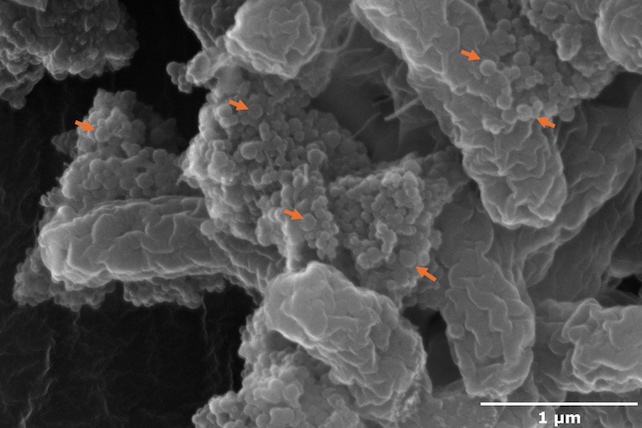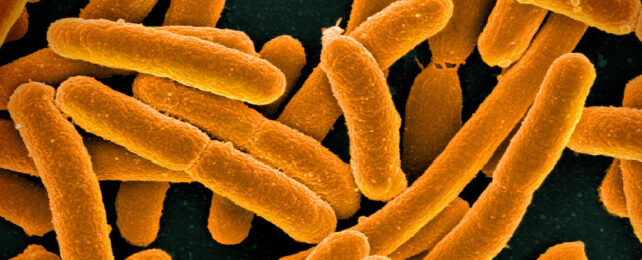We're all awash in plastic fragments, with many of the smallest particles ranging in size from a micrometer down to a single nanometer across.
The health effects of these tiny 'nanoplastics' are still largely unknown, but the infinitesimal size and environmental abundance of them makes these synthetic fragments a potentially outsized threat – and not just for humans. In fact, not even just for organisms with cells as complex as ours.
According to a new study, nanoplastics also seem to cause stress for pathogenic E. coli bacteria.
That might sound helpful for us, in a "the enemy of my enemy is my friend" sense, but it isn't that simple, the study suggests.
Nanoplastics did not significantly affect the survival of E. coli, although they did affect other traits of the bacteria, such as biofilm development and overall growth. Perhaps most importantly for us, exposure to nanoplastics apparently prompts E. coli to become more virulent.
The study offers a novel glimpse into this dynamic, says senior author Pratik Banerjee, a molecular microbiologist in the Department of Food Science and Human Nutrition at the University of Illinois Urbana-Champaign.
"Other studies have evaluated the interaction of nanoplastics and bacteria, but so far, ours is the first to look at the impacts of microplastics and nanoplastics on human pathogenic bacteria," Banerjee says.
The researchers focused on E. coli O157:H7 – a notorious pathogen often implicated in outbreaks of food poisoning – and made nanoplastics from polystyrene, a synthetic polymer and one of the most widely used plastic types.
They found that nanoplastics with a positively charged surface are more likely to cause physiological stress in this E. coli serotype, prompting a defensive response. The stressed bacteria make extra Shiga-like toxin, their characteristic illness-causing chemical.
Due to the bacteria's negative surface charge, the researchers suspected E. coli might be harmed by positively charged nanoplastics. They tested this by applying either a positive, neutral, or negative charge to the particles before introducing them to E. coli.
"We started with the surface charge. Plastics have an enormous ability to adsorb chemicals. Each chemical has a different effect on surface charge, based on how much chemical is adsorbed and on what kind of plastic," Banerjee says.
"We didn't look at the effects of the chemicals themselves in this paper – that's our next study – but this is the first step in understanding how the surface charge of plastics impacts pathogenic E. coli response," he adds.
In addition to producing more toxin, free-swimming bacteria were slower to multiply when exposed to positively charged nanoplastics, and slower to collectively form biofilms when first exposed to the charged plastics the study found.

Gathering into a biofilm can offer unique benefits for bacteria, including the formation of a protective extracellular coating. While previous studies have explored the effects of nanoplastics on free-swimming bacteria, little is known about how nanoplastics affect biofilms.
Given the importance of biofilms in real-world conditions, the authors of the new study hoped to learn how nanoplastics affect E. coli in this state. They did so by giving the bacteria a surface to colonize, waiting a week or two for a biofilm to form, and then adding charged nanoplastics.
Even in a biofilm, the bacteria still became stressed when exposed to positively charged nanoplastics, and they still produced additional Shiga-like toxin. In addition, positively or negatively charged conditions influenced changes in virulence genes.
"Biofilms are a very robust bacterial structure and are hard to eradicate. They're a big problem in the medical industry, forming on inserts like catheters or implants, and in the food industry," Banerjee says.
"One of our goals was to see what happens when this human pathogen, which is commonly transmitted via food, encounters these nanoplastics from the vantage point of a biofilm," he says.
Needless to say, increased virulence is an ominous sign for a pathogen that's already responsible for widespread foodborne illness.
More research will be needed to build on these findings, the researchers say, and to help illuminate the different ways nanoplastic pollution can affect E. coli as well as other pathogenic bacteria.
The study was published in the Journal of Nanobiotechnology.
